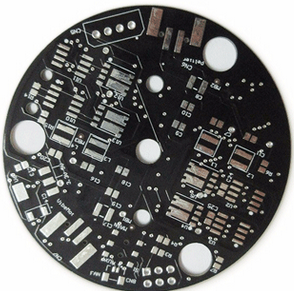In the production process of PCB circuit boards, some process defects are often encountered, such as poor copper wire fall off of the PCB circuit board (also commonly referred to as copper rejection), which affects product quality. The common reasons for PCB circuit board dumping copper are as follows:
1. PCB circuit board manufacturing process factors:
1) Copper foil is over-etched. Electrolytic copper foils used in the market are generally single-sided galvanized (commonly known as ashing foil) and single-sided copper plating (commonly known as red foil). The common copper foil is generally galvanized above 70um. Copper foil, red foil and ash foil below 18um have basically no batch copper rejection.
2) A local collision occurred in the PCB process, and the copper wire was separated from the substrate due to external mechanical force. This poor performance is poor positioning or orientation, the copper wire will be obviously twisted, or scratches/impact marks in the same direction. If you peel off the copper wire at the defective part and look at the rough surface of the copper foil, you can see that the color of the rough surface of the copper foil is normal, there will be no side erosion, and the peeling strength of the copper foil is normal.
3) The PCB circuit design is unreasonable, and the thick copper foil is used to design the thin circuit, which will also cause the circuit to be over-etched and the copper will be thrown away.
2. Reasons for laminate manufacturing process:

Under normal circumstances, as long as the laminate is hot pressed for more than 30 minutes, the copper foil and the prepreg will be basically completely combined, so the pressing will generally not affect the bonding force between the copper foil and the substrate in the laminate. However, in the process of stacking and stacking laminates, if the PP is contaminated or the matte surface of the copper foil is damaged, it will also cause insufficient bonding force between the copper foil and the substrate after lamination, resulting in positioning (only for large plates) Words) or sporadic copper wires fall off, but the peel strength of the copper foil near the off-line is not abnormal.
3. Reasons for laminate raw materials:
1). Ordinary electrolytic copper foils are all products that have been galvanized or copper-plated on the wool foil. If the peak value of the wool foil is abnormal during production, or when galvanized/copper-plated, the plating crystal branches are poor, resulting in the peeling strength of the copper foil itself. Not enough, the copper wire will fall off due to the impact of external force when the defective foil pressed sheet material is made into a PCB board and plug-in in the electronics factory. This kind of poor copper rejection will not cause obvious side corrosion after peeling the copper wire to see the rough surface of the copper foil (that is, the contact surface with the substrate), but the peeling strength of the entire copper foil will be very poor.
2) Poor adaptability of copper foil and resin: Some laminates with special properties, such as HTg sheets, are used now, because the resin system is different, the curing agent used is generally PN resin, and the resin molecular chain structure is simple and curing When the degree of cross-linking is low, it is necessary to use a copper foil with a special peak to match it. When producing laminates, the use of copper foil does not match the resin system, resulting in insufficient peeling strength of the sheet metal-clad metal foil, and poor copper wire shedding when inserting.